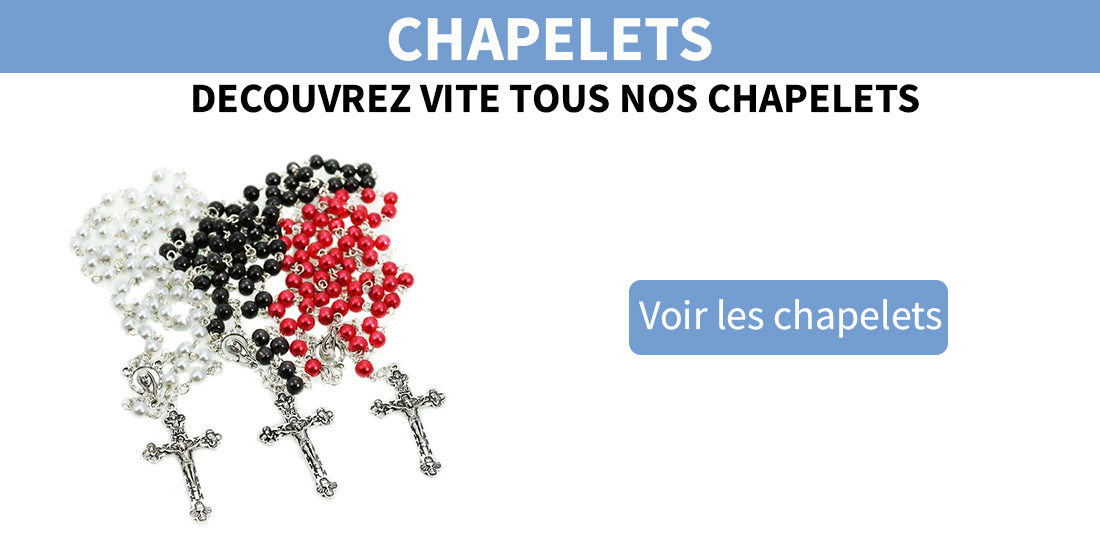
INRI: What do these 4 letters on the cross of Jesus Christ mean?
One of the main reasons why Jesus , the son of man came into the world, is to show his love for us by dying for our sins ✝️ . His birth was prophesied by many prophets in the Old Testament - they called him King - a King of Israel. 2 Samuel 7: 12-13.
Have you ever wondered what was written on the sign placed just above the head of Jesus Christ on the cross 🤔?
We are going in this article, retrace the course and decipher the meaning of the four letters inscribed above Christ.

1. THE MEANING OF INRI LETTERS
First of all, it is important to note that INRI is not a word. INRI are actually the initial letters of four Latin words. These letters form what is called a acronym .
Acronym INRI means Iesus Nazarenus Rex Iudaeorum,
which can be translated by Jesus of Nazareth, the king of the Jews 👑.

But why does the acronym INRI, written in Latin bear the inscription Jesus of Nazareth, the king of the Jews?
🧐 Several answers were given to answer this question.
It should be noted, that the INRI formulation for "Jesus the Nazarene, King of the Jews" is from the Gospel according to John . Indeed, in the Gospel of Luke, the formulation is "This one is the King of the Jews", in the Gospel of Mark it is "King of the Jews", finally, in the Gospel of Matthew "Jesus king Jews". We come back to this later in this article.
The sentence of the titulus crucis is therefore different in each gospel , but it is John's formulation that is more widely disseminated.
The term Titulus Crucis is also defined further down in this article, but for the impatient, be aware that a Titulus is simply an inscription affixed to a support in Antiquity . At the time, for each crucifixion, a titulus describing the reason for conviction was affixed to the cross.
Today, when we search for the term Titulus Crucis, it is the sign above the cross of Jesus that is the main reference. Titulus Crucis is therefore the sign, the sign on which INRI is written.
The first possible explanation comes from the fact that the first copy of the Bible produced was in Vulgate Latin, and that therefore the inscription on the cross "told" in the Bible, is in Latin.
For information, The first complete combined bible was translated by Saint Jerome into Latin Vulgate.
Moreover, in the Gospel of John, John specifies that the inscription is in three languages: Hebrew, Latin and Greek. Finally, it is mainly INRI (the Latin inscription therefore), which is the most popular. History will validate this theory since in 325 Saint Helena would have found the Titulus Crucis. She would then have brought him back to Rome, where the relic is still carefully preserved.

The Bible, Gutenberg Bible was produced between 1452 and 1455.
It is believed that people got used to the Latin part of the load and was abbreviated to INRI .
Are you looking for angel statues? Find our partner shop: Angel wings
2. PONCE PILATE
Who was responsible for the crucifixion of Jesus Christ?
It is Pontius Pilate also the man who made INRI write on the cross above the head of Jesus 📜.

who was he? Most people don't know Pontius Pilate that like the man who gave the order to crucify Jesus, but do not know who he was: his origin, his full name, the language he spoke.
Pontius Pilate was a Roman - he probably must have spent his childhood in Rome 🇮🇹. His full name in Latin is Marcus Pontius Pilatus.

When Pontius Pilate was brought into the world, 👶🏻 he was neither declared nor confirmed, but he was governor of the Roman province of Judea. At this time, Judea was under the rule of the Roman Empire, so Ponce was named by Tiberius to supervise the affairs of Judea 🗞️.
The Titulus that Pontius Pilate ordered to write has also been controversial . Indeed, in the Gospel, John writes that some Jewish investigators told Pilate : "Do not write: King of the Jews. But write that he said: I am the king of the Jews." Pilate replied: "What I wrote, I wrote."
3. INRI - BIBLICAL REFERENCE
🔍 Matthew gave us what was written there, just like the other books of the gospel:
" And lay on his head his written accusation, it is Jesus the King of the Jews. " Matthew 27:37

The Gospel of John has also described what was written above the head of the Son of God on the cross:
"And Pilate wrote a title and put it on the cross. And the writing was, Jesus of Nazareth, King of the Jews." John 19:19
Jean did not stop here; he went further to tell us why it was easy for people to understand what was written:
" This title then bound many Jews: for the place where Jesus was crucified was near the city: and it was written in Hebrew, Greek and Latin. " John 19:20

📜 The note on the head of our Lord Jesus was written in three languages . Note that the common language that was spoken in Jesus' day is Greek and the Aramaic , some people spoke the Hebrew .
4. INRI AND TITULUS CRUCIS
what Titulus crucis ? Literally, this Latin inscription is " The title of the cross ".
A Titulus in Antiquity is simply an inscription.
The Titulus Crucis is an inscription indicating the reason for condemnation in crucifixes in Roman times.
Indeed, crucifixion was a widespread practice of torture at this time, and many criminals suffered this punishment.
Each crucified therefore has, above his cross, a titulus crucis: the reason why he is condemned.
History has made the Titulus Crucis of Jesus so popular, that today this term almost exclusively designates the wooden sign affixed with the inscription INRI, of the king of the Jews.
A common mistake people make is to confuse the Titulus Crucis with the cross. Warning! It is not the cross 🙅♀️; it is the sign affixed to the cross. It is a piece of wood who is placed above the head of jesus on the cross 🔨.

This is exactly where Pontius Pilate a make the load write INRI ✏️ ( Jesus of Nazareth, King of the Jews ).
This relic was discovered in 325 by Saint Helena at the place of the crucifixion: Mount Golgotha. She had excavations undertaken on this place and found the three crosses: that of Jesus and the two thieves crucified at the same time as him. Helena brought all the relics back to Rome and bequeathed them to the Church.
A church was built not far from the Chapel where Helena kept the relics: the Basilica of Santa Croce de Jerusalem, in Rome. The relics are still there today.
What happened to Jesus after his crucifixion?
What happened to the cross was not said concisely, but it must have been removed a few days after Jesus was taken from it and placed near Golgotha (where Jesus was crucified, also called Calvary).
A few years later, the place where the cross was thrown became a town, Aelia Capitol Ina 🏙️.

It was built under the rule of the Roman Emperor Hadrian. There was a structure that Hadrian set up, a temple of Venus. It was a temple for the goddesses. The temple was destroyed under the orders of Hélène to begin the excavations.
Under this temple are tombs, it is believed that the tomb of Jesus was there.
CONCLUSION
The story of Titulus crucis remains essentially the same according to the Gospels and the meaning of the sentence remains unchanged , however, we see that it is the Gospel of John that has been more widely retained and disseminated.
Several interpretations and discoveries have been made regarding the Titulus Crucis.
We know in particular that the main message was written in three languages: Greek, Latin and Hebrew.
It is even said that the message was written in the three languages from right to left, which is not shocking for Hebrew but a little more for Latin and Greek which are written from left to right traditionally. Some interpret it as a kind of mockery of Pontius Pilate (the man who crucified Jesus) towards the king of the Jews, and that he precisely sought to get closer to the Hebrew.
Moreover, in some representations of the cross, the The N of INRI is written backwards.
We also know that some Jews, those who were against Jesus, were also against this inscription , but Pontius Pilate refused to change it.
Finally, it is interesting to note that relics of the cross and the titulus still exist today and are treasured by the Catholic Church in Rome.
GOD BLESS YOU















Bizarrement autrefois en Bretagne certaines croix de calvaire dans des endroits perdu portaient le prénom Henri a la place du INRI ………. Étonnant non .
Sería muy bueno que mandarán los nombres de los libros en dónde están escritas el por qué o el título título de eldelito de Jesucristo en lacruz
super article et de super produit !
Merci pour votre article !!! plein d’informations et facile a comprendre…..
Très interessant, merci pour votre article boutique chretienne 👍
On en sait désormais plus sur la signification de l’inri grace a vous, jai longtemps porté un collier avec cette inscription sans en savoir le sens.
Leave a comment